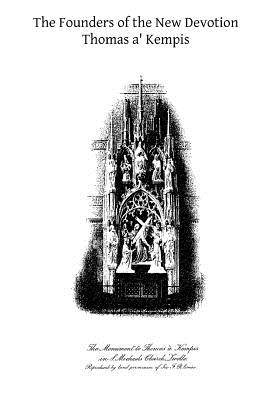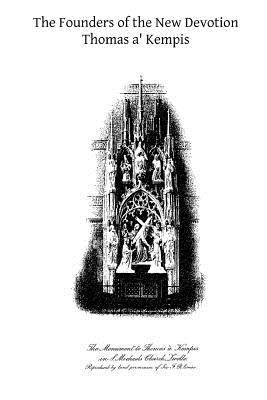
- Retrait gratuit dans votre magasin Club
- 7.000.000 titres dans notre catalogue
- Payer en toute sécurité
- Toujours un magasin près de chez vous
- Retrait gratuit dans votre magasin Club
- 7.000.0000 titres dans notre catalogue
- Payer en toute sécurité
- Toujours un magasin près de chez vous
The Founders of the New Devotion
Being the Lives of Gerard Groote, Florentius Radewin and their Followers
Thomas A'Kempis
Livre broché | Anglais
29,45 €
+ 58 points
Description
Grooote, Radewin and their follower desired to bring the Sacred Scriptures to the people at a time prior to the printing press and to this end undertookt he copying of the Scriptures by hand. The period covered by the Lives of Gerard Groote and his followers is the hundred years which elapsed between 1340, the date of Groote's birth, and 1439, the year in which Henry Brune died. In order to understand the significance of the movement to which a Kempis has given the name of "The New Devotion," it is necessary briefly to consider the conditions which prevailed at the time when that movement was initiated and the difficulties with which its adherents had to contend. At the time of Groote's birth the Low Countries were divided into a number of smal principalities, each of which was governed by its own Sovereign: of these the most powerful were the Counts of Holland and the Prince Bishops of Utrecht, who as Motley says, " divided between them the Sovereignty of what afterwards became the United StateR of the Netherlands." By the death of William IV of Holland in 1355, that country was plunged into a whirpool of civil discord which did not subside until 1437, when Philip of Burgundy, misnamed "The Good," obtained undisputed possession of the supreme power. The Bishops of Utrecht, in addition to their spiritual authority, enjoyed a large amount of temporal power, and were for many centuries the most formidable of the opponents to the Counts of Holland. The Bishopric was founded by Charles Martell in the eighth century, that prince having rewarded the Anglo-Saxon monk, Willibrord, with large possessions in the neighbourhood of the town from which the See is named, in recognition of his labours on behalf of the Faith. Winfred or Bonifacius who succeeded, received further accessions of territory, and by his efforts and his martyr's death at Dokkum, Christianity was established yet more firmly in the Netherlands. The power of his successors, the later Bishops, gradually but continually increased, and since in earlier years the authority of these prelates was frequently exercised in the defence of the people against oppression, it rested upon a foundation surer than any which could be laid by Royal Grant or Charter.
Spécifications
Parties prenantes
- Auteur(s) :
- Traducteur(s):
- Editeur:
Contenu
- Nombre de pages :
- 314
- Langue:
- Anglais
Caractéristiques
- EAN:
- 9781494236991
- Date de parution :
- 21-11-13
- Format:
- Livre broché
- Format numérique:
- Trade paperback (VS)
- Dimensions :
- 152 mm x 229 mm
- Poids :
- 421 g

Les avis
Nous publions uniquement les avis qui respectent les conditions requises. Consultez nos conditions pour les avis.






